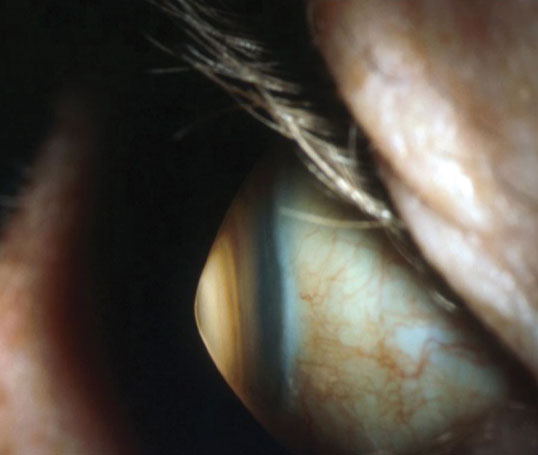 |
| Educate any expectant mothers about their greater potential for visual fluctuation following CXL. Photo: Thomas Stokkermans, OD, PhD. Click image to enlarge. |
To determine how pregnancy might affect the effectiveness of accelerated crosslinking (CXL) in keratoconus patients, researchers recently examined a group of pregnant women who successfully received the treatment prior to contraception. The team found that although keratoconus did tend to progress during pregnancy, the corneal changes typically regressed after delivery.
The study followed 24 eyes of 19 pregnant women with stable keratoconus, with a mean time of one year between CXL and conception. The mean postpartum follow-up duration was 27.6 months.
The findings revealed that crosslinked corneas steepened during pregnancy in 41.7% of the patients; however, corneas flattened by nearly the same amount post-delivery by the end of the follow-up period. Pregnancy did not alter any of the refractive or visual parameters in crosslinked corneas, suggesting that the temporary change in corneal curvature could be attributed to a hormonal cause.
“It has been shown in a few laboratory and clinical studies that the cornea has sex hormone receptors in the epithelial, stromal and endothelial cell layers, the cornea is an estrogen-sensitive tissue and the biological function of keratocytes is directly affected by its interaction with estrogen,” the authors of the study wrote. They noted that estrogen has been shown to “stimulate the production of matrix metalloproteinases and collagenolytic enzymes that may be responsible for reduced corneal stiffness.”
The thyroid has also been pinpointed as a cause of corneal biomechanics during pregnancy, and maternal thyroid hormone deficiency has been proven to be a risk factor for the progression of keratoconus during those nine months.
Regardless of the exact cause of keratoconus progression during pregnancy, research shows a patient’s condition will likely return to its post-CXL state in the months or years after giving birth. Assure your expectant keratoconus patients with stable crosslinked corneas that any corneal changes they may notice will more than likely subside after delivery.
Sarac O, Yesilirmak N, Caglayan M, et al. Dynamics of keratoconus progression after prior successful accelerated cross-linking treatment during and after pregnancy. J Cataract Refract Surg. August 24, 2021. [Epub ahead of print]. |

